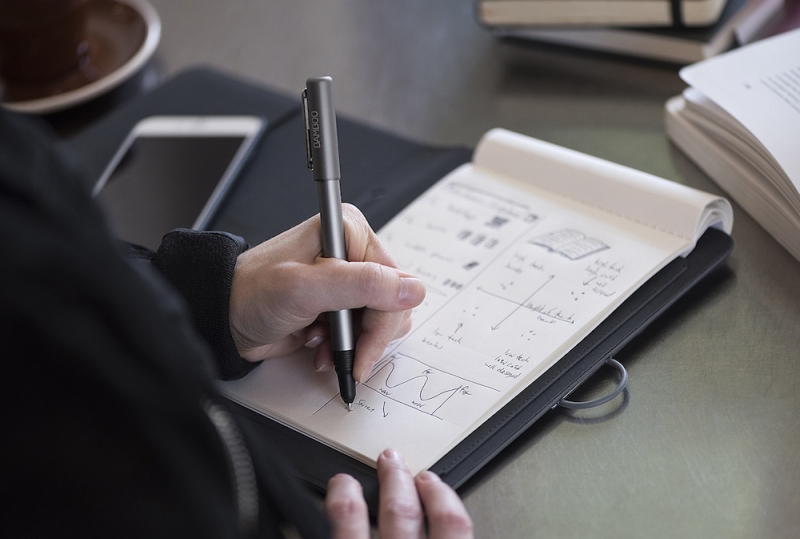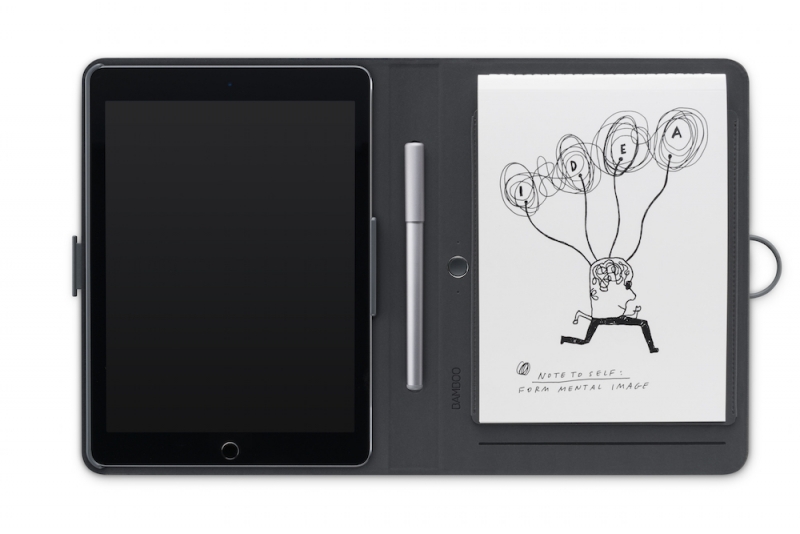
Good news for those of you who lament the slow disappearance of actual pen and paper writing in today’s digital society; graphics tablet company Wacom has just announced the Bamboo Spark, a ‘smart folio’ that turns handwritten notes into digital files.
The Bamboo Spark, which Wacom showed off at this year’s IFA, uses a specialized ballpoint pen that writes in real ink. Users can scribble away on the included A5 paper, or anything else that fits in the folio, and an electro-magnetic resonance sensor in the pad records the strokes and transfers them to the pen. The pad can read through up to 50 pages or 7mm of paper, and the pen can save up to 100 pages of notes without any data connection.
After pairing the folio with the Spark app over Bluetooth, notes are transferred to a connected iOS or Android device. From here they can be edited and exported to Evernote, Dropbox or Wacom’s own cloud service. This means users can access their notes through any device. Each note can be saved as an image file, PDF, or .WILL file. There’s also a very handy slider in the Spark’s software that lets you play back through each stage of your written notes.

The Spark folio is charged via a USB connection and offers about 8 hours of use when topped up. The special ink that the pen uses lasts about 3 months’ worth of writing. A pack of three cartridges can be ordered from Wacom’s shop for $10.
The Bamboo Spark will be available in October for $159.95. There will be three options available for purchasers: one with a gadget pocket, allowing users to carry their smartphone or extra paper; another with a tablet sleeve, which can hold a tablet up to 9.7 inches in size; and third version which is specifically designed to hold an iPad Air 2.
Check out the video below to see the Bamboo Spark in action.
https://www.techspot.com/news/62004-wacom-bamboo-spark-brings-pen-paper-digital-age.html